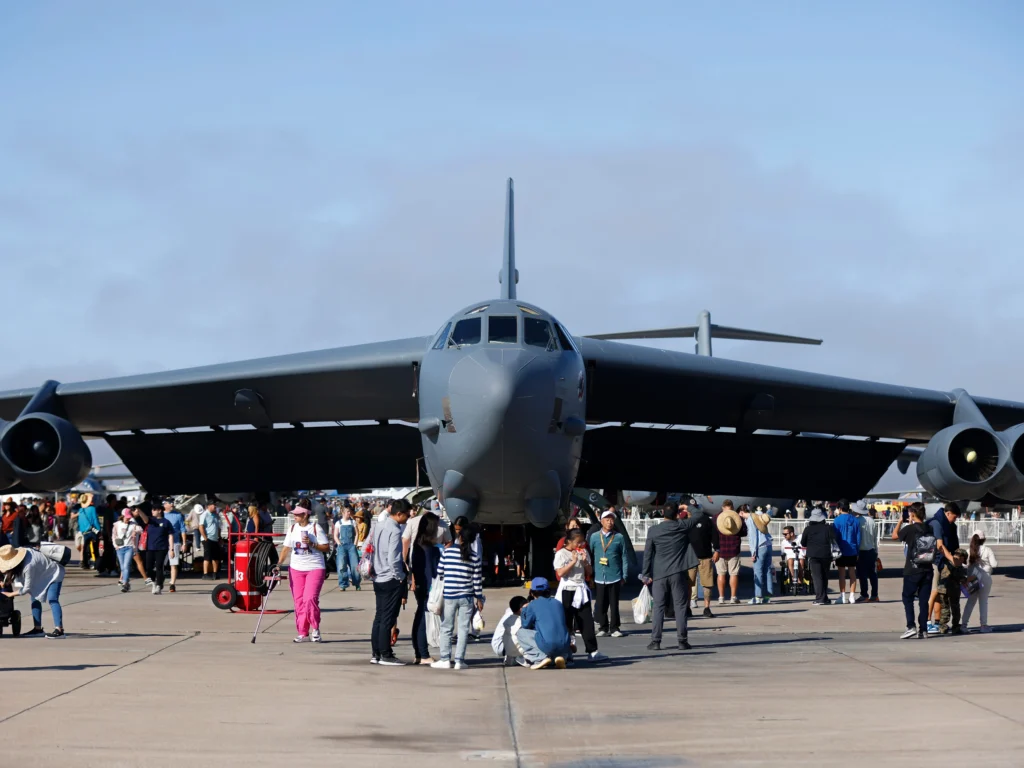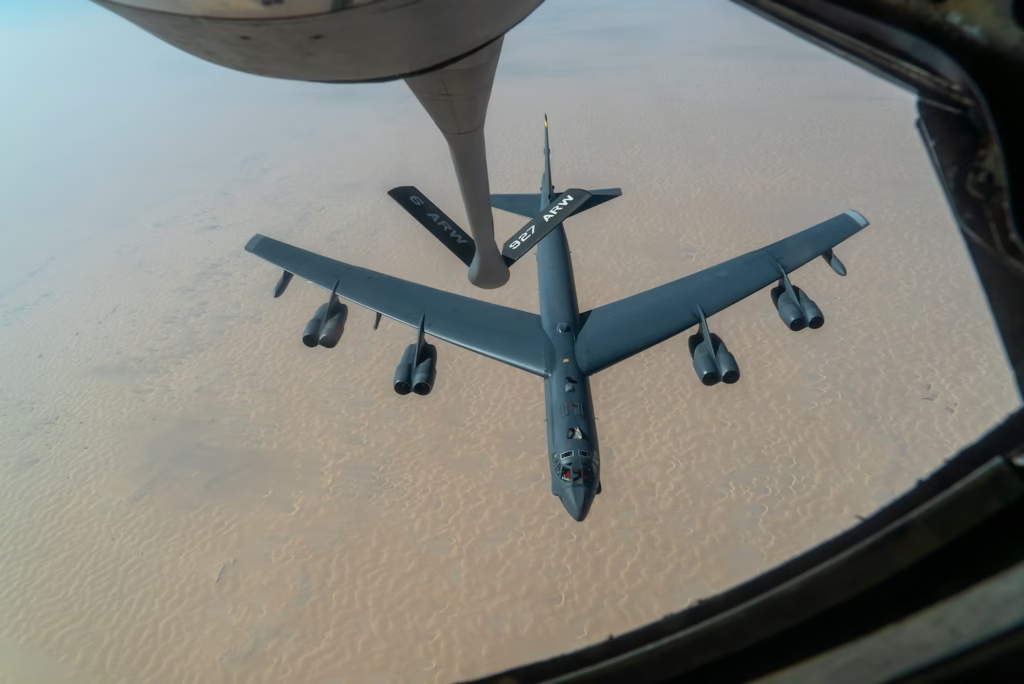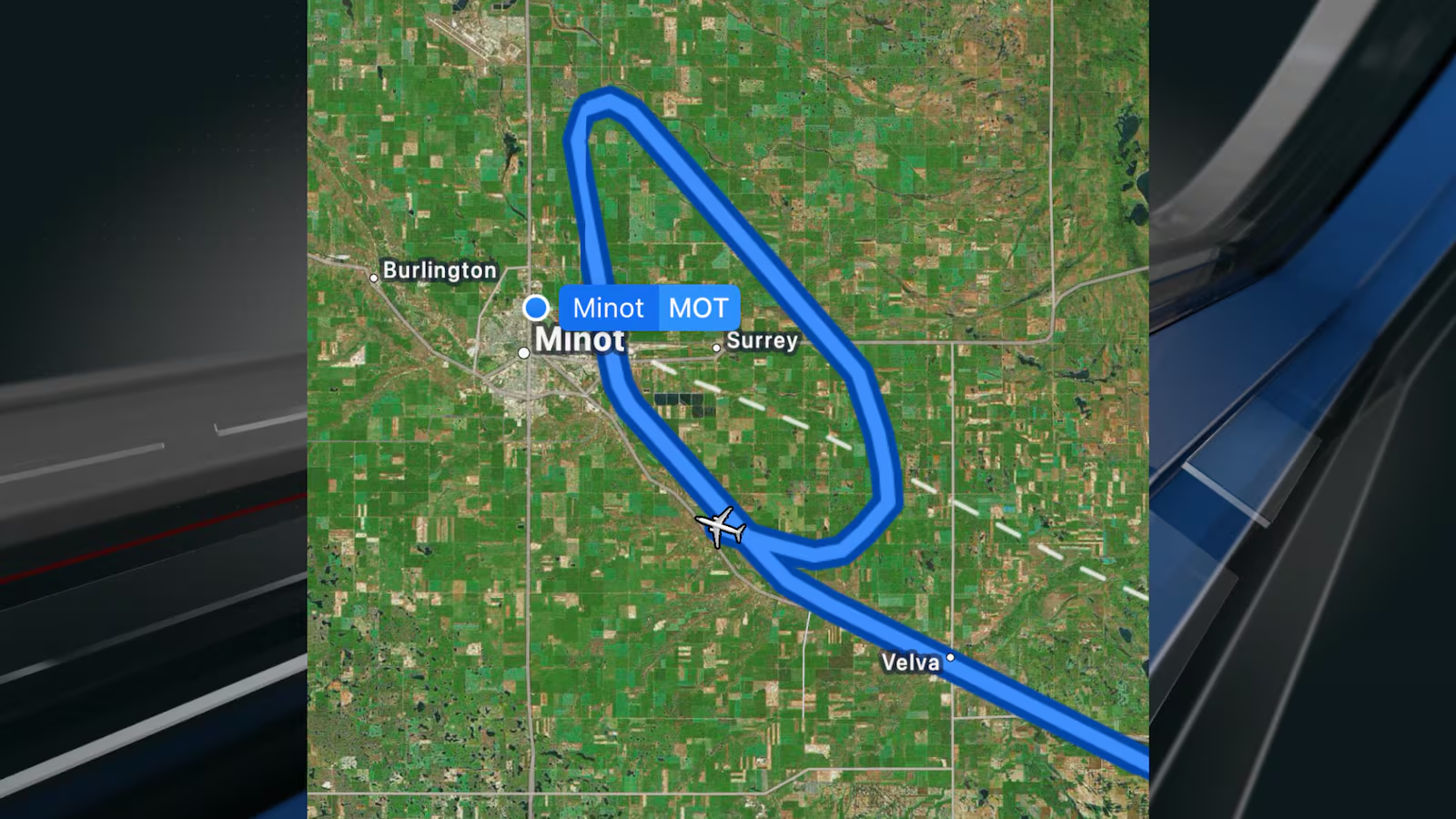Delta Pilot performs aggressive maneuver to avoid B‑52 mid‑air collision
On July 18, a Delta Connection flight, operated by SkyWest Airlines, executed a dramatic “go‑around”—an aggressive maneuver—to evade a U.S. Air Force B‑52 bomber near Minot, North Dakota. This near-miss underscores ongoing safety concerns stemming from civilian and military airspace shared operations.
What happened: a terrifying moment at altitude
Shortly before landing at Minot International Airport, SkyWest Flight 3788, inbound from Minneapolis–St. Paul was cleared for approach. Suddenly, the pilot spotted a military aircraft—later confirmed to be a B‑52 Stratofortress—on a converging course. Without prior warning, he executed an abrupt climb and turn to avoid collision.

In an audio announcement shared with passengers, the captain expressed regret and relief:
“So sorry about the aggressive maneuver…this is not normal at all. I don’t know why they didn’t give us a heads‑up…long story short, it was not fun, but I do apologize.”
Despite the tension onboard—described by eyewitness Monica Green as “weirdly calm”—the aircraft landed safely after circling the airport.
Shared airspace: a recurring safety risk
Minot Air Force Base routinely conducts both training missions and flyovers—for instance, during the nearby North Dakota State Fair. The B‑52 involved took off from Minot AFB, but the civilian crew received no radar warning about its presence.

This incident is the latest in a series of civilian-military airspace conflicts—famously, in early 2025, a U.S. Army Black Hawk collided with an American Airlines jet over Washington D.C., resulting in 67 fatalities. Aviation industry experts flag these close calls as evidence of coordination gaps and outdated protocols.
Inside the cockpit: quick thinking saved lives
The pilot described how, upon detecting the bomber, he “felt it was the safest thing to do to turn behind it,” outrunning the fast-moving military aircraft. His swift decision-making—executing a go-around—is a practiced safety maneuver that allows pilots to abort landing and climb away to reassess approach.
Airport radar systems are typically capable of tracking military traffic. The absence of a radar advisory flagged serious procedural issues. The FAA, Delta Air Lines, SkyWest Airlines, and the U.S. Air Force are now reviewing coordination protocols in response.
Passenger reactions: gratitude and shock
Passengers praised the pilot’s transparency. Monica Green noted his rattled voice yet clear explanations:
“He was almost shaking, trying to find the right words…felt good that they weren’t just going to brush it off.”
The cockpit audio went viral, with widespread media coverage echoing similar sentiments: it “caught us by surprise” and was “not a fun day at work.” The calm demeanor and professionalism helped ease onboard tensions.
Investigations & next steps
SkyWest initiated an internal investigation; Delta referred inquiries to its regional partner. The FAA is evaluating the incident within its Active Safety Management System, seeking to update civilian-military coordination protocols.
Minot AFB confirmed the B‑52 participated in a State Fair flyover, and a spokesperson said the incident remains under review. WSB-TV
What happens next: strengthening shared airspace safety
Several key changes are likely under discussion:
- Real-time radar sharing: ensuring military operations are immediately visible to civilian controllers.
- Mandatory traffic advisories: alerts must be issued when mixing high-speed military jets with commercial traffic.
- Revised training for controllers and crews: improved drills and protocols to handle mixed-use airspace events.
These procedural updates will be crucial in preventing future near-collisions as commercial traffic and military flights increasingly share air corridors.
Conclusion
This July 18 incident near Minot serves as a stark reminder: even routine routes can become hazardous when civilian and military aviation sectors overlap without robust coordination. Thanks to the pilot’s calm professionalism and the safety buffers inherent in aviation protocols, disaster was averted. Still, the episode highlights systemic vulnerabilities—forcing the FAA, military, and airlines to strengthen communication and airspace management.
As shared corridors become busier, enhancing real-time awareness and response capabilities is essential to keeping skies safe—for both military and civilian flights.
“Subscribe to trusted news sites like USnewsSphere.com for continuous updates.”





